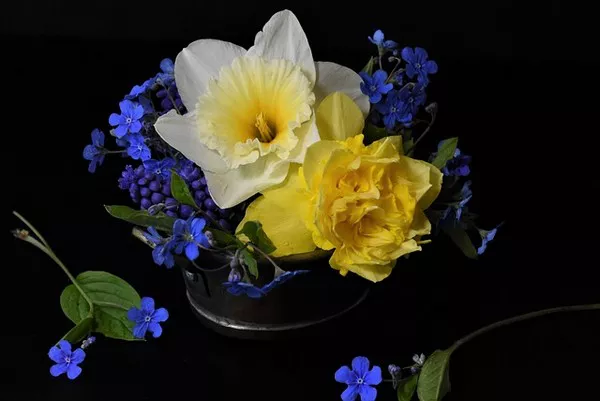Forget-Me-Nots (Myosotis spp.) are charming, delicate flowers that bloom in a spectrum of blues, pinks, and whites. Their dainty appearance and unique name make them a favorite in gardens across the world. However, once these enchanting flowers have finished their beautiful display, many gardeners wonder what to do next. Should you leave them alone or take specific steps to care for them? In this comprehensive guide, we’ll explore the various options for managing Forget-Me-Nots after they’ve finished flowering to ensure they continue to thrive year after year.
Understanding Forget-Me-Nots
Before diving into post-flowering care, let’s briefly understand these lovely plants. Forget-Me-Nots are typically cool-weather annuals or short-lived perennials that are known for their strikingly vibrant, five-petaled flowers and small, round leaves. They are native to Europe and are known for their affinity for moist, partially shaded locations, although they can adapt to different growing conditions.
After blooming, these plants produce small, rounded seeds that can lead to self-seeding. This self-sowing characteristic means you can enjoy a fresh batch of Forget-Me-Nots year after year with minimal effort.
Deadheading and Pruning
Deadheading, the process of removing spent flowers, is a crucial step to encourage the healthy growth of your Forget-Me-Nots. By deadheading, you prevent the plant from investing energy in seed production and encourage it to produce more blooms. Here’s how to do it:
a. Wait until the flowers have faded and the petals start to fall off.
b. Use clean, sharp scissors or pruning shears to cut the flower stem back to a healthy set of leaves or the base of the plant.
c. Be careful not to damage the surrounding foliage, as this can affect the overall health of the plant.
Deadheading should be performed consistently throughout the blooming season to extend the flowering period and keep the plant looking tidy.
Fertilization
Forget-Me-Nots benefit from regular feeding, especially in the post-flowering period when they need to replenish their energy stores. Use a balanced, all-purpose fertilizer to provide essential nutrients to the plant. Apply the fertilizer according to the manufacturer’s instructions, typically in late spring or early summer when the plants are actively growing. Make sure not to over-fertilize, as this can lead to excessive foliage growth at the expense of flowers.
Watering
Proper watering is essential for the health of Forget-Me-Nots, particularly during the post-flowering phase. These plants prefer consistently moist soil but can tolerate short dry spells. Ensure you water them regularly, especially during hot and dry periods. Avoid overwatering, as this can lead to root rot. A layer of mulch can help retain soil moisture and regulate temperature, providing an ideal environment for Forget-Me-Nots to thrive.
Division
If you’re growing perennial Forget-Me-Nots, consider dividing the plants every few years. Division not only rejuvenates the plants but also prevents overcrowding, which can lead to decreased flowering and overall plant health. Here’s how to divide Forget-Me-Nots:
a. In early spring or late autumn when the plant is dormant, dig up the entire clump of Forget-Me-Nots.
b. Gently separate the clump into smaller sections, each containing both roots and foliage.
c. Replant these divisions in prepared soil, spacing them at least a foot apart.
d. Water the newly planted divisions thoroughly to help them establish.
Division is an effective way to propagate Forget-Me-Nots and ensure their continued vitality in your garden.
Self-Seeding Management
As mentioned earlier, Forget-Me-Nots have a natural tendency to self-seed, which can lead to an abundance of new plants in your garden. While this can be a charming and low-maintenance way to ensure their presence, it’s essential to manage self-seeding to prevent overcrowding. Here are some tips for managing self-seeding Forget-Me-Nots:
a. Allow some seedlings to mature and flower while thinning out excess plants.
b. Collect seeds to control where they are dispersed or share them with fellow gardeners.
c. Be mindful of the specific variety of Forget-Me-Nots you are growing, as some have more aggressive self-seeding habits than others.
Pests and Diseases
Forget-Me-Nots are relatively pest and disease-resistant, but like any plant, they can encounter problems. Keep an eye out for aphids, slugs, and snails, which are known to occasionally feed on these plants. Use appropriate methods to control these pests if necessary.
Additionally, watch for signs of powdery mildew, a fungal disease that can affect Forget-Me-Nots, especially in humid conditions. Proper spacing, good air circulation, and well-drained soil can help prevent this disease. If powdery mildew does appear, treat it promptly with a suitable fungicide.
Conclusion
Forget-Me-Nots, with their delicate beauty and subtle charm, are a beloved addition to any garden. After flowering, proper care is essential to ensure their continued growth and vibrant blooms. By deadheading, feeding, dividing, and managing self-seeding, you can maintain healthy plants that grace your garden year after year. With a little attention and care, Forget-Me-Nots will never be forgotten in your garden, and their enchanting blooms will be a lasting memory for all to cherish.


